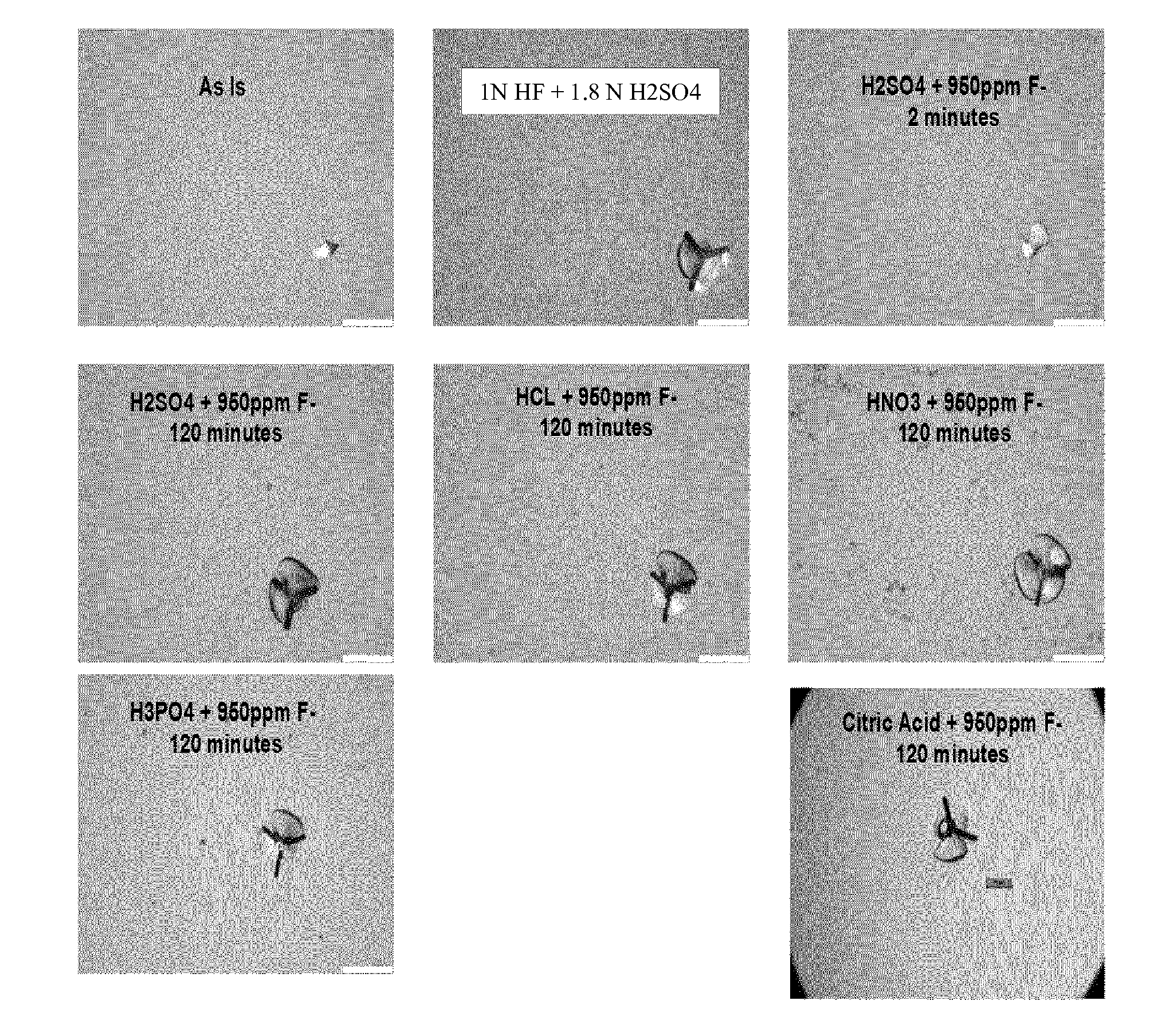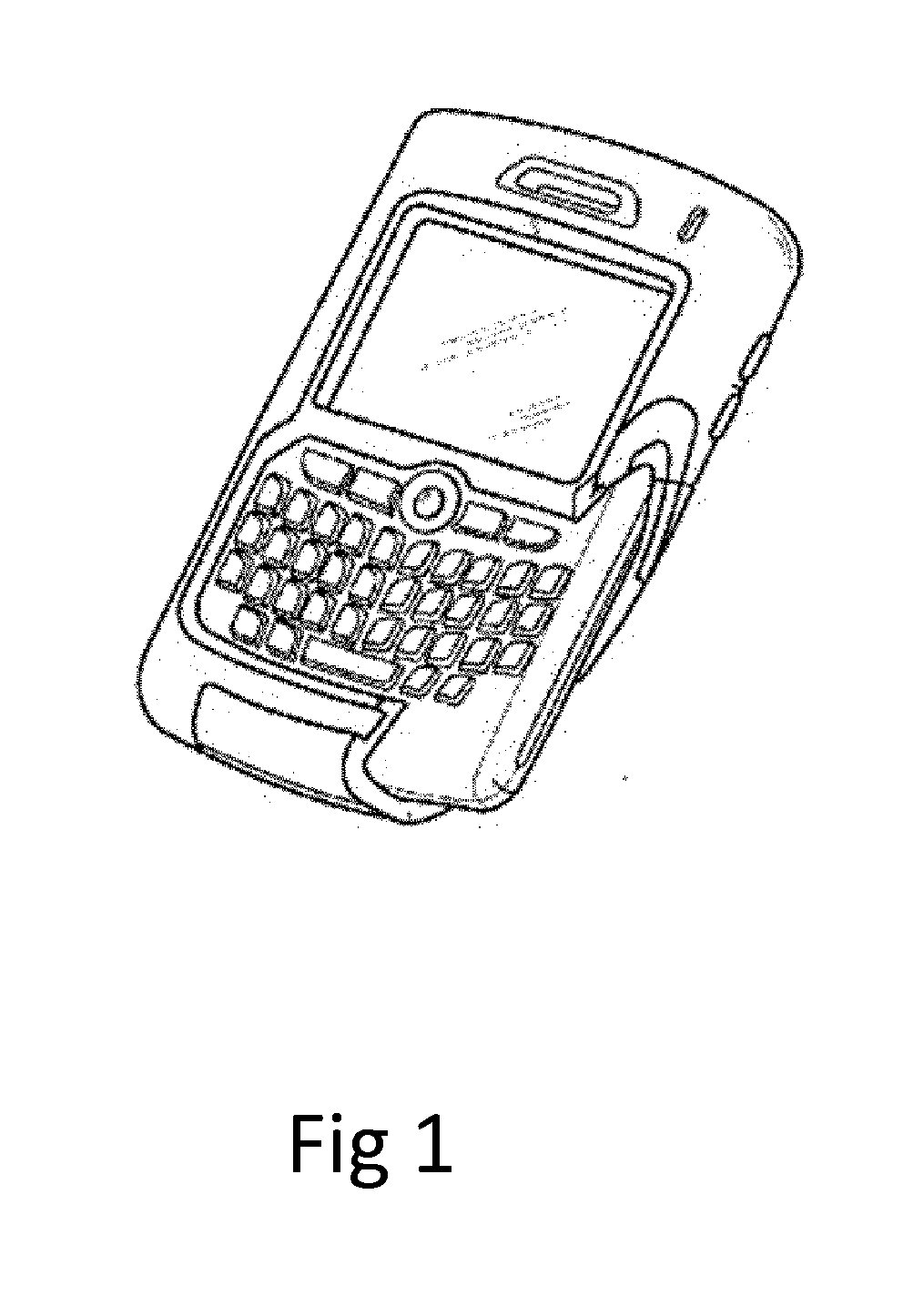Acid strengthening of glass
- Summary
- Abstract
- Description
- Claims
- Application Information
AI Technical Summary
Benefits of technology
Problems solved by technology
Method used
Image
Examples
example 1
[0063]In this example, the effectiveness of the methods described herein for strengthening thin alkali aluminosilicate glass articles is demonstrated in terms of flexural rupture strength tests on treated and untreated samples of such a glass. Table 2 below sets forth representative results for such strength tests as conducted on samples of alkali-containing glass having an area of about 25 square centimeters (cm2) and a thickness of about 1.3 mm, such glass having a nominal composition as follows (in mol % based on oxides): 69 mol % SiO2, 9 mol % Al2O3, 14 mol % Na2O, 1 mol % K2O, 6 mol % MgO, and 1 mol % CaO. All samples selected for evaluation were in “as-manufactured” condition (i.e., with pre-existing surface flaws resulting from handling during manufacture and without any pre-treatment, such as tempering). Ten samples were evaluated for each of the sample groups included in Table 2.
[0064]The samples from the untreated group (U) in Table 2 were tested without any surface treatm...
example 2
[0072]In this example, the effectiveness of the methods described herein for strengthening thin alkali aluminosilicate glass articles is demonstrated in terms of flexural rupture strength tests on treated and untreated samples of such a glass. The samples used had the same general dimensions and compositions as the glass samples in EXAMPLE 1.
[0073]All samples were intentionally flawed with a 5 gram Cube Corner indentation prior to etching with the various treating media. Comparisons were made to an “as-manufactured” glass samples (control) and samples treated with a high fluoride-containing solution consisting of a combination of HF and H2SO4 at concentrations of 1.5N and 1.8N, respectively after the 5 gram indentation. Table 4 provides the components and conditions for the 8 different sample groups.
[0074]Ten samples of each sample group were submerged in the solutions and under the conditions provided in Table 4. All treated samples were treated at room temperature (about 22° C.).
[...
example 3
[0078]In this example, the effectiveness of the methods described herein for strengthening thin alkali aluminosilicate glass articles is demonstrated in terms of flexural rupture strength and impact resistance tests on treated and untreated samples of such a glass. The samples used had the same general dimensions and compositions as the glass samples in EXAMPLE 1. All of the samples were subjected to an ion exchange chemical strengthening step, where the glass samples were immersed in a molten KNO3 bath or about 8 hours at about 410° C. to produce compressive stress layers in the outer surfaces of the articles. The compressive stress layers generally had a compressive stress of about 774 megapascals (mPa) and a depth of layer of about 44 μm.
[0079]Comparisons were made to untreated glass samples (control) and samples treated with a high fluoride-containing solution consisting of a combination of HF and H2SO4 at concentrations of 1.5N and 1.8N, respectively, after the ion exchange. Ta...
PUM
| Property | Measurement | Unit |
|---|---|---|
| Fraction | aaaaa | aaaaa |
| Fraction | aaaaa | aaaaa |
| Fraction | aaaaa | aaaaa |
Abstract
Description
Claims
Application Information
 Login to View More
Login to View More - R&D Engineer
- R&D Manager
- IP Professional
- Industry Leading Data Capabilities
- Powerful AI technology
- Patent DNA Extraction
Browse by: Latest US Patents, China's latest patents, Technical Efficacy Thesaurus, Application Domain, Technology Topic, Popular Technical Reports.
© 2024 PatSnap. All rights reserved.Legal|Privacy policy|Modern Slavery Act Transparency Statement|Sitemap|About US| Contact US: help@patsnap.com










